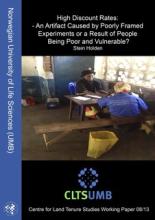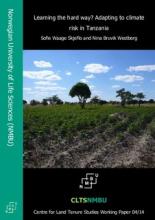/ library resources
Showing items 1 through 9 of 23.Climate change increases the vulnerability of agricultural sector due to the increasing threat from pest attacks. Mitigation of a threat that results from climate change requires adaptation strategies.
Brazil has become an agricultural powerhouse, producing roughly 30 % of the world’s soy and 15 % of its beef by 2013 – yet historically much of that growth has come at the expense of its native ecosystems.
Agriculture is an important type of land use but suffers from drought, especially under global climate change scenarios. Although government is a major actor in helping farmers to adapt to drought, lack of funds has constrained its efforts.
An urgent need to stop degradation is frequently cited as support for climate mitigation efforts involving forests. However, lessons learnt from social science research on degradation narratives are not taken into consideration.
Ecosystem-based adaptation (EbA) measures have been increasingly promoted in the literature, as well as in policies and practices, for their environmental and socio-economic co-benefits.
This paper explores the potential of climate finance to support developing country efforts to shift away from unsustainable land use patterns in the context of the 2015 Paris Climate Agreement. We pursue two research objectives here.
Area-based targets for afforestation are a frequent and prominent component of policy discourses on forestry, land use and climate change emissions abatement.
This study revisits the issue whether poverty and shocks are associated with high discount rates by using an incentive compatible Multiple Price List approach in a poor rural population in Africa where a substantial share of the population had been affected by drought in the recent rainy season.
We use recent panel data on Tanzanian farm households to investigate how previous exposure to weather shocks affects the impact of a current shock.
Paginação
Land Library Search
Through our robust search engine, you can search for any item of the over 73,000 highly curated resources in the Land Library.
If you would like to find an overview of what is possible, feel free to peruse the Search Guide.



